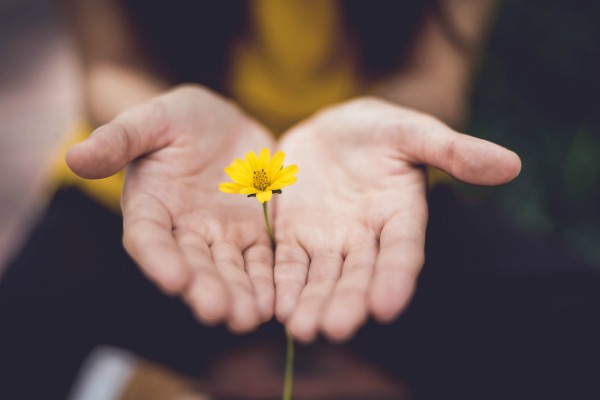Confession: Before we knew how to define mindfulness, we used to be complete skeptics.
We could see how lifting weights or eating well could improve your wellness. But just sitting there cross-legged with your eyes closed—what possible benefit could come from doing nothing? Well actually, a lot, as we’ll get into shortly.
Maybe to you, mindfulness still feels a little hippy-dippy. But once you look at the avalanche of mindfulness research from the last decade, you might switch teams too. And maybe you’ll even find yourself making mindfulness a part of your days. If we have anything to say about it, you’ll be a convert in no time.
Before we get too ahead of ourselves, let’s break this down. We’re giving you a no-fluff guide to mindfulness practice. Here’s what it includes:
- A scientific overview of how to define mindfulness
- Its potential benefits
- Some of the problems with the research (because transparency)
- Several do-it-tomorrow strategies to try it yourself
Let’s get started.
What Mindfulness Isn’t

Before we get too far, we should say one thing: Much of the pop-psychology literature and mindfulness media coverage is just not critical enough of the science. Translation: There’s a crap ton of BS out there.
All the snake oil salesmen have damaged the movement by declaring mindfulness to be a tonic for all of life’s problems, which it’s not. It is, however, an increasingly well-researched way to up your well-being, even if it can’t completely fix your life.
The Drama Around a Mindfulness Definition

Spoiler: We wish we could provide a singular mindfulness definition, but as it turns out, there are many definitions. In fact, there are too many.
One of the major issues facing mindfulness research is that scientists and practitioners define mindfulness differently. Say what?
That means that many distinct sets of data are being lumped together under the same “mindfulness” umbrella, despite obvious differences in how they define it. And consequently, much of the media is overstating the amount of evidence that supports any one particular way of practicing mindfulness.
Don’t get us wrong, it’s not like all the research is rendered useless by this issue. It just means that we should be wary of all this hyper-positivity. We should temper our expectations a bit. And we should be more critical of the mindfulness instructions we choose to follow.
In light of this confusion, let’s look at several well-respected ways to define mindfulness.
How to Define Mindfulness, According to the Experts

Mindfulness definition #1:
According to Jon Kabat-Zinn, founder of mindfulness-based stress reduction, mindfulness is…
The awareness that arises through paying attention in a particular way: on purpose, in the present moment, and nonjudgmentally. And sometimes I’ll add (that mindfulness) is in the service of self-understanding and wisdom.”
Mindfulness definition #2
According to a 2004 study “Mindfulness: A Proposed Operational Definition,” mindfulness is…
The self-regulation of attention with an attitude of openness, curiosity, and acceptance.”
Mindfulness definition #3
According to mindfulness expert Cory Muscara…
With mindfulness, we deeply sense into our internal and external experience with an attitude of non-judgment and childlike curiosity.”
Mindfulness definition #4
According to the Mayo Clinic, mindfulness is…
…the act of being intensely aware of what you’re sensing and feeling at every moment—without interpretation or judgment.”
Mindfulness definition #5
According to Dr. Daniel J. Siegel, a clinical professor of psychiatry at the UCLA School of Medicine and the founding co-director of the Mindful Awareness Research Center,
Mindful awareness… actually involves more than just simply being aware: It involves being aware of aspects of the mind itself. Instead of being on automatic and mindless, mindfulness helps us awaken, and by reflecting on the mind we are enabled to make choices and thus change becomes possible.”
And the list could go on and on. So where does that leave us?
Cutting the Confusion: How We Define Mindfulness

Now that you’ve read how some of the experts define mindfulness, you probably noticed that there are several components that show up in almost every definition. And these points of commonality make a solid starting point.
So let’s keep it simple: We define mindfulness as “an intentional and non-judgmental awareness of present experience.” But wtf does that even mean? Basically, mindfulness is deliberately taking control of your attention and directing your focus to something in the present moment, without evaluating or judging.
Here’s a quick way to think about it. Ask yourself two questions:
1. Are you intentionally guiding your attention to something in the present moment?
2. Are you doing so without evaluating or judging whatever you’re focused on?
If you answered yes to both questions, then congrats, you’re being mindful.
Still confused? Don’t worry. Actually practicing mindfulness tends to help people understand what it’s all about. And at the end of the day, you may find that a slightly different definition works best for you. That’s cool too.
So now let’s talk about why you might want to practice mindfulness in the first place.
Research-Backed Mindfulness Benefits

There’s no doubt that mindfulness will solve each and every problem you’ve ever had, right? (Kidding, of course.)
At this point, we know that the positive effects of mindfulness are overstated, but what does quality research actually say about its proven benefits?
- In a meta-analysis of 209 studies of Mindfulness-Based Therapy, researchers found that mindfulness was just as effective for treating psychological problems as other interventions including cognitive behavioral therapy and medication. The researchers concluded that “(Mindfulness Based Therapy) is an effective treatment for a variety of psychological problems, and is especially effective for reducing anxiety, depression, and stress.”
- Another meta-analysis looked at mindfulness-based stress reduction in healthy populations and found that it reduced stress equally well as more standard relaxation practices.
- In one meta-analysis of the mindfulness–creativity link, researchers discovered a weak, but statistically-significant connection between certain styles of mindfulness and creativity.
- Mindfulness is associated with greater empathy, compassion, better relationships, more autonomous behavior, and an increased ability to focus, according to Positive Psychology in Practice: Promoting Human Flourishing in Work, Health, Education, and Everyday Life.
To sum it up: Mindfulness is associated with many of the things we’re looking for in a good life. So go ahead and get excited about the good mindfulness could do for you. But be realistic about it. Ready to try it?
3 Ways to Practice Mindfulness
These general instructions are based on recommendations from science-based mindfulness teachers. Pick one or two of the following strategies, try them for at least eight minutes a day for two weeks, and record how effective they were for you.
And hey, no cheating: Read the instructions all the way through before getting started.
1. Mindful breathing

- Find a quiet place and sit or lay down comfortably.
- Set a timer for eight minutes. Yes, eight.
- Close your eyes if it feels right for you.
- Place your hand on your belly and take long full breaths that fill up your abdomen like a balloon. (Stick it out, don’t suck it in. Got it?)
- Focus your attention on your breath, and feel your hand move with every inhale and exhale.
- Your mind is going to wander, which is totally normal. Don’t judge yourself for it. When you notice it, gently guide your attention back to your inhales and exhales.
- Does it feel boring and tough? That means you’re doing it right. It’s part of the process.
- Continue for eight full minutes. If you’re feeling it, keep it rolling.
- Pay attention throughout the day and see if you notice any differences. Less anxious? Not so cranky with your crew? Now you’ve got it.
2. Mindful body scanning

- Find a quiet place and sit or lay down comfortably.
- Set a timer for eight minutes. (Still eight.)
- Close your eyes if it feels right for you.
- Start by directing your attention to the sensations present in and around your forehead.
- Feel tense in your forehead? Pay attention to the tension and relax the muscles in this area.
- Hold your attention on your forehead for what feels like a natural amount of time before moving on. What’s a natural time? Probably until the tension eases a bit.
- Move your attention to your jaw, take notice of any tension, and relax your jaw.
- Try not to judge the tension in your body or beat yourself up over how much of it there is. Simply become aware and relax what you can.
- Progressively scan your body and relax your muscles from head to toe. Move from forehead to jaw, to neck, to shoulders, to chest, etc.
- Continue your body scan for eight minutes. If you finish early, move back through the body until the eight minutes are up. (You thought we were going to tell you to stop, didn’t you?)
- Pay attention throughout the day and see if you notice any differences.
3. Open-monitoring mindfulness

You can find a free guided meditation here, but here are some general instructions:
- Find a quiet place and sit or lay down comfortably.
- Set a timer for eight minutes.
- Close your eyes if it feels right for you.
- Openly pay attention to whatever thoughts, feelings, sensations, or content that comes into your awareness.
- You may notice all of your thoughts (e.g., “This is weird” or “I’m sweating to death right now.”) Or maybe you’re replaying memories or noticing that you’re hungry or tired.
- Wherever your awareness goes, take notice of any judgments you are making and consciously let go of them.
- Try not to get stuck on any particular thought, feeling, or emotion. Just notice them and let them go.
- Continue monitoring whatever comes into your awareness for the duration of the eight minutes.
- Pay attention throughout the day and see if you notice any differences.
Important step: Track your results in a journal or on your phone. This helps you figure out which types of mindfulness you enjoy and what progress you’re making.
Making mindfulness matter to you

So, what is mindfulness anyway?
Some experts like to define mindfulness as a path to personal freedom and spiritual enlightenment. Others define mindfulness as a way of being, a lifestyle, and a means of achieving the good life. We used to be skeptical, but now we see it as a science-backed means of improving our well-being.
At its core, being mindful is something we can all do. Even you. It’s a super helpful way to quiet a racing mind and promote restful awareness in a world that’s always demanding a little bit more. So give it a shot and see how mindfulness fits in with your life. And then pop back in and tell us how it’s going.
Your turn: Have you ever jumped on the mindfulness movement? How did it work for you? Share your experiences in the comments and come back for more ways to create positive routines.
Author: Taylor Kreiss
Taylor Kreiss is an existential coach on a mission to help people flourish.

Let Us Know What You Think